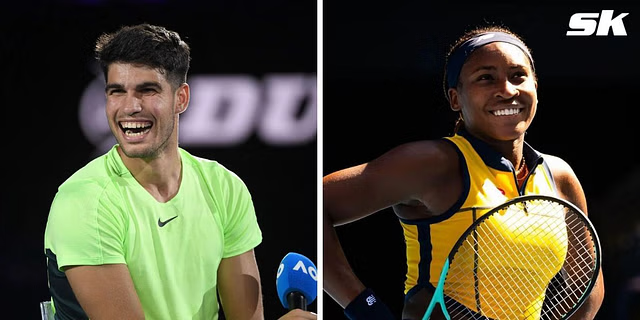
On this crisp Thursday afternoon, April 10, 2025, the tennis world finds itself at a crossroads, grappling with a simmering controversy that threatens to dim the brilliance of its brightest stars. Players like Coco Gauff and Carlos Alcaraz, whose electrifying talent and magnetic charisma have propelled the sport into a new era, are being stifled—not by opponents on the court, but by an outdated system off it. The issue? A restrictive content chokehold that prevents these young phenoms from sharing their own match footage on social media, a move that critics argue is squandering a golden opportunity to grow the game and connect with fans in an increasingly digital age.
Picture this: Alcaraz, the 21-year-old Spaniard fresh off a dazzling 6-3, 6-1 victory over Daniel Altmaier at Monte Carlo, pulls off a jaw-dropping tweener lob that leaves the crowd roaring. Gauff, the 20-year-old American powerhouse, unleashes a ferocious backhand winner that clinches a crucial point in her latest Grand Slam run. These are the moments that define their brilliance, the kind that could ignite social media feeds and draw millions of eyeballs to tennis. Yet, when fans flock to Instagram or TikTok—where Alcaraz boasts 6.3 million followers and Gauff commands 1.8 million—they’re met with silence. No official clips, no highlight reels, just still photos or reposts from news outlets. Why? Because tournament organizers and broadcasters, clinging to exclusive rights, bar players from sharing their own match footage, leaving the sport’s most marketable stars handcuffed.
The frustration is palpable, and it’s not just the players feeling it. “I’m the one out there working, I’m the one sweating,” a top player recently lamented, her words echoing a sentiment shared across the tour. “How come I can’t put one clip of me hitting a tennis ball in a match on my own vlog?” It’s a fair question, one that cuts to the heart of tennis’s dilemma. The sport’s governing bodies and rights holders argue that protecting broadcast deals—lucrative contracts with major networks—is essential to fund the game. But at what cost? By locking down content, they’re missing the boat on a generation that thrives on instant, player-driven engagement. “Tennis as a collective body should want nothing more than Carlos Alcaraz saying, ‘Hey everyone, did you see the crazy tweener I hit? Here it is,’” a prominent voice in the sport asserted, highlighting the absurdity of the restriction. “If you’re a league or tournament, even a rights holder, I want nothing more than Coco and Carlos using their own content to drive engagement with tennis.”
The numbers don’t lie. Last year, Grand Slam events drew nearly 2 billion viewers across more than 200 countries, while on-site attendance climbed 10% to over 3.36 million fans. Social media engagement soared too, with the four majors racking up 6.3 billion video views and 12 billion impressions—a 30% jump from the previous year. Imagine the potential if players like Gauff and Alcaraz, with their massive followings, could amplify those figures by posting their own highlights. Instead, the sport risks alienating a digitally savvy audience that craves authenticity and immediacy—qualities other sports, like Formula 1 and the NBA, have embraced by empowering their stars to share freely.
The legal backbone of this chokehold is rooted in copyright law, where footage ownership typically lies with the producers—often the tournaments or broadcasters who pour millions into capturing the action. It’s a system designed to protect their investment, but it’s increasingly at odds with the modern media landscape. Players, the very architects of the spectacle, are left on the sidelines, unable to leverage their own performances to build their brands or the sport’s reach. “Tennis is missing out,” a former pro remarked, shaking his head at the lost potential. “These kids could be the biggest ambassadors for the game, but we’re tying their hands.”
This isn’t a new fight. Some players have long pushed back, with one even launching a petition last year at Wimbledon to loosen the reins. Others have turned to vlogs and behind The-scenes content to connect with fans, but without match footage, it’s like serving an ace with a broken string. Meanwhile, the Professional Tennis Players Association is stirring the pot, advocating for change, though Alcaraz himself has stayed out of the legal fray. The debate has sparked a broader conversation trending across social platforms: Is tennis shooting itself in the foot by prioritizing control over growth? For every stunning rally Gauff and Alcaraz deliver, the sport’s failure to let them share it feels like a double fault—a self-inflicted wound that could waste the very stars poised to carry it into the future. As the clay season heats up and the spotlight intensifies, the pressure is on tennis to rethink its playbook before the game’s next generation gets drowned out by the silence.
Leave a Reply